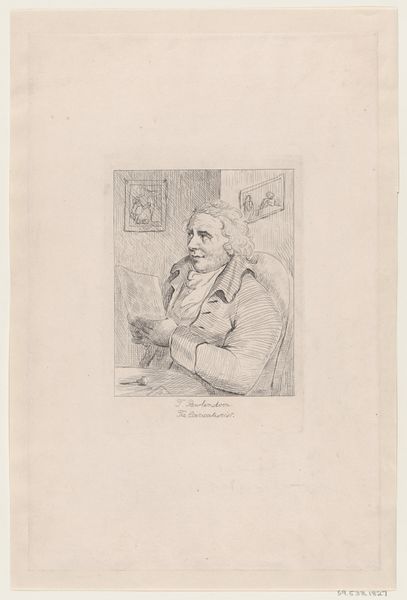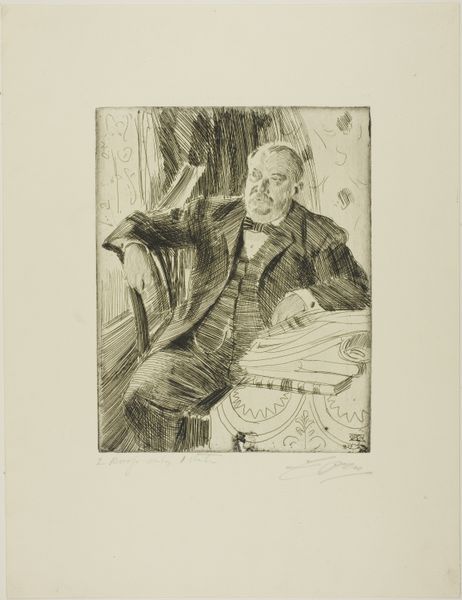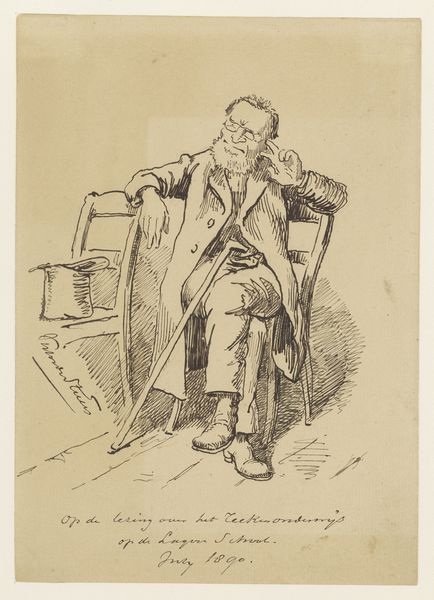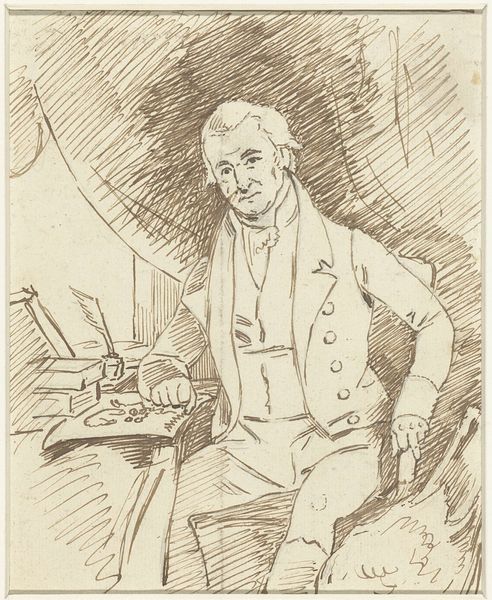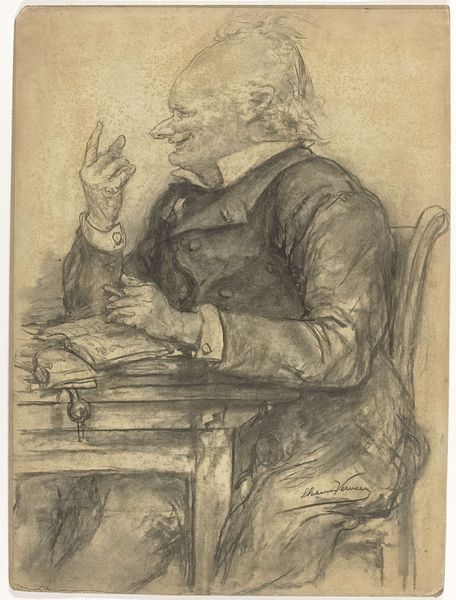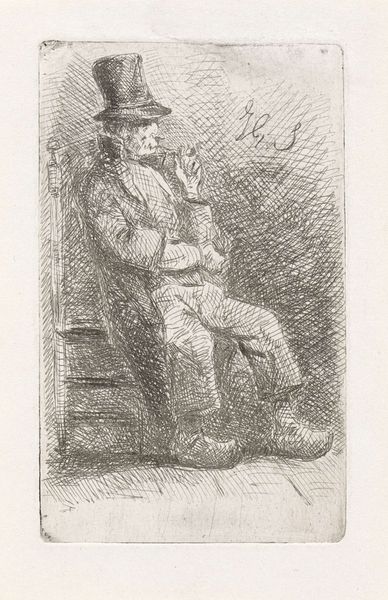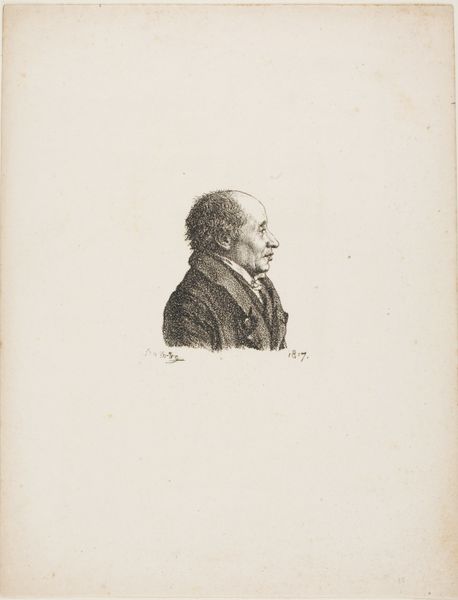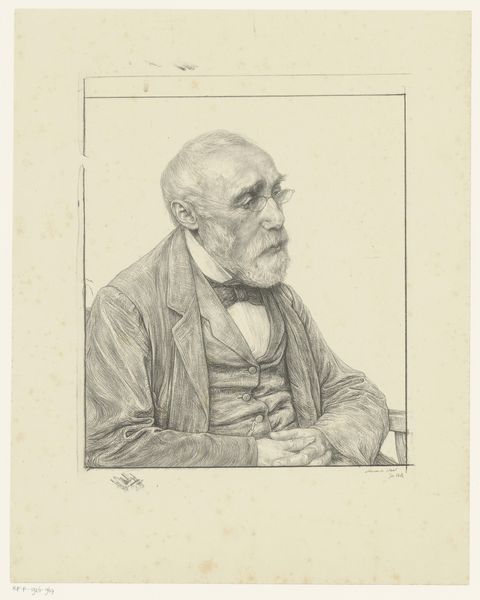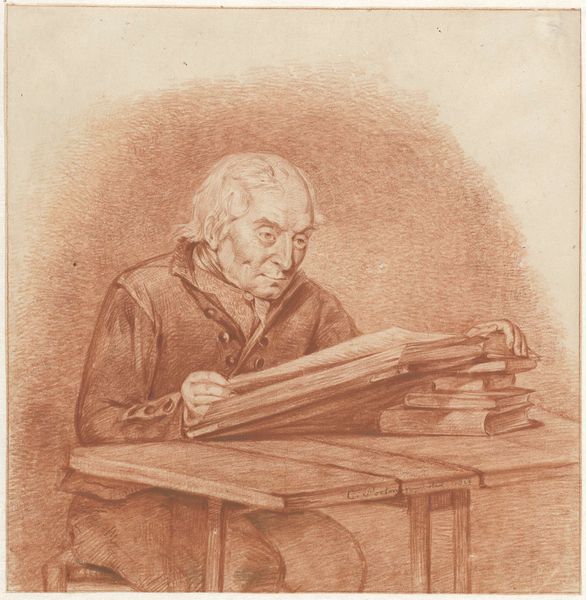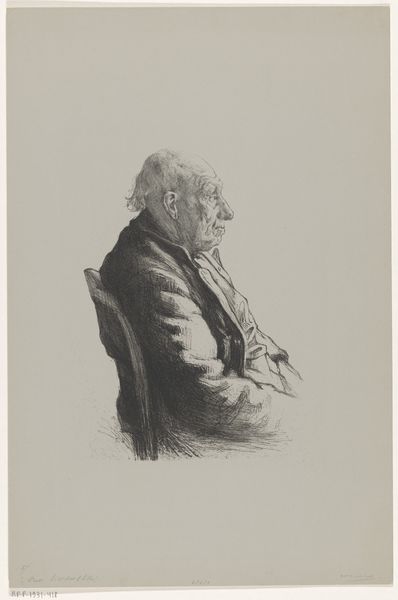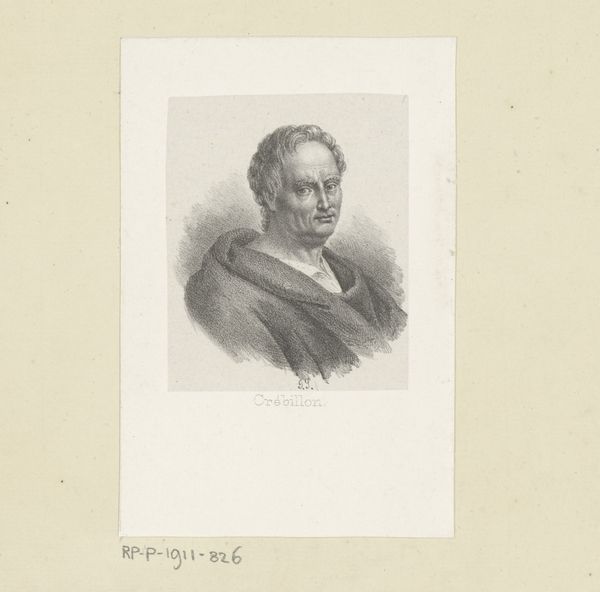
Dimensions: height 215 mm, width 140 mm
Copyright: Rijks Museum: Open Domain
Curator: Looking at this portrait, there is a certain… melancholic air. It's delicate but strong. Editor: This is a self-portrait of Sir Francis Seymour Haden from around 1880, currently residing here at the Rijksmuseum. It's an etching, showcasing his skills not just as a surgeon, but as a highly accomplished etcher. Curator: Surgeon, you say? Interesting. So, what do we make of a surgeon making art? Does the precision required in his profession bleed into his artistic style, perhaps? The line work seems both incredibly detailed but also frantic, conveying maybe a need for perfection or control? Editor: Certainly, his professional life informs his art, as the medical field was undergoing significant changes in the late 19th century with growing scientific methodology. But his commitment to etching, particularly en plein air etching, aligns him with a larger movement advocating for original printmaking versus reproductive engraving. This places his work squarely within a debate about artistic authenticity and its value for the public. Curator: That's interesting, a surgeon advocating for authenticity in artmaking. I'm drawn to how the etching's contrasts and textures seem to amplify the introspection in Haden's gaze. Does this tie to the broader socio-political issues swirling around artists claiming agency over their craft? Is he making a statement about his position through the very act of self-portraiture? Editor: I think you hit on a key aspect. Self-portraiture was, and remains, a way to assert identity and control one's image. Here, Haden is consciously crafting his persona, visually participating in debates around art's purpose in a rapidly changing society, and as such the portrait itself performs political work. It's not just a likeness; it's a declaration. Curator: So this image captures more than just an individual likeness. It is representative of broader dialogues regarding the meaning of artwork, societal change, and self-determination, and is visually communicating those concepts using romantic-style artwork. A quiet, complicated rebellion, if you will. Editor: Precisely. Seeing it framed that way enriches how we perceive the artistic and cultural context within the portraiture, itself. Curator: Thanks for helping illuminate this unique work for our visitors.
Comments
No comments
Be the first to comment and join the conversation on the ultimate creative platform.
